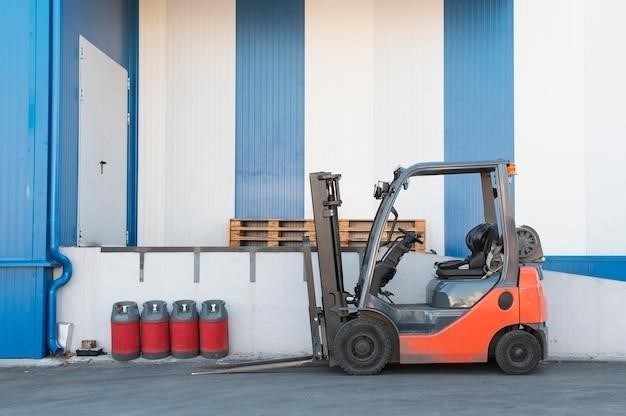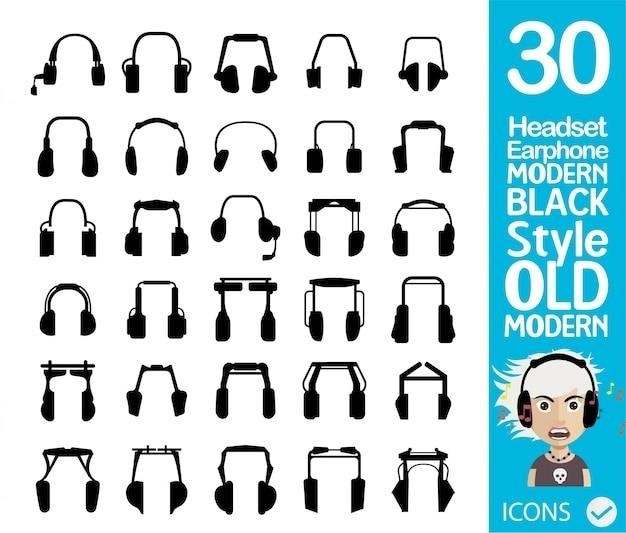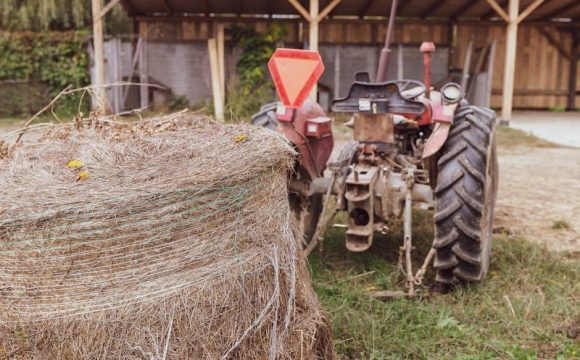Manual Forklift Jack⁚ An Essential Tool for Material Handling
A manual forklift jack, also known as a hand pallet truck or double fork pallet jack, is a versatile and essential tool for material handling in various industries. These jacks are manually operated, using a handle and lever to control the lifting and lowering of the forks and horizontal travel. They are commonly used in warehouses, factories, and distribution centers for moving palletized goods efficiently and safely.
What is a Manual Forklift Jack?
A manual forklift jack, also known as a hand pallet truck or double fork pallet jack, is a fundamental piece of equipment in material handling, particularly in warehouse and industrial settings. It’s a manually operated device designed to lift and transport palletized loads efficiently. The core components of a manual forklift jack include a pair of forks, a lifting mechanism, and a handle. The forks, typically made of sturdy steel, are designed to slide underneath a pallet, allowing the jack to engage with the load.
The lifting mechanism is usually powered by a hydraulic system, which utilizes a hand pump to generate pressure. This pressure is then used to raise the forks, lifting the pallet and its contents. The handle, connected to the hydraulic system, allows the operator to control the lifting and lowering of the forks. It also provides leverage for moving the jack horizontally, enabling the transport of palletized goods within the warehouse or other areas.
Manual forklift jacks offer a simple and cost-effective solution for moving heavy loads. They are versatile and can be used in various applications, including loading and unloading trucks, moving pallets within a warehouse, and transporting goods to different workstations. Their compact design and maneuverability make them suitable for tight spaces and areas with limited overhead clearance.
Types of Manual Forklift Jacks
Manual forklift jacks come in a variety of types, each tailored to specific needs and applications. The most common types include⁚
- Standard Manual Pallet Jack⁚ This is the most basic type, featuring a fixed lift height and a standard fork length. It is ideal for general-purpose pallet handling in warehouses and distribution centers.
- Low Profile Pallet Jack⁚ Designed for applications where low clearance is required, such as under low-profile trucks, this type has a reduced overall height and a low pick-up point.
- High Lift Pallet Jack⁚ This type features a higher lift height, allowing for the stacking of pallets on shelves or other elevated platforms. It is often used in applications where goods need to be stored at a higher level.
- 4-Way Pallet Jack⁚ This versatile jack allows for movement in all four directions (forward, backward, and sideways) due to its unique fork design. It is ideal for maneuvering pallets in tight spaces and around obstacles.
- Weighing Pallet Jack⁚ Equipped with an integrated scale, this type allows operators to weigh the load directly on the pallet. This eliminates the need for separate weighing equipment and streamlines the handling process.
- Electric Pallet Jack⁚ While not strictly a manual forklift jack, electric pallet jacks are often considered in the same category. They offer motorized lift and travel capabilities, making them suitable for heavier loads and longer distances.
The choice of manual forklift jack type depends on the specific needs of the application, including the weight and size of the load, the required lift height, and the working environment.
Benefits of Using a Manual Forklift Jack
Manual forklift jacks offer a range of benefits that make them a valuable asset for material handling operations. Some of the key advantages include⁚
- Cost-Effectiveness⁚ Compared to powered forklifts, manual jacks are significantly more affordable to purchase and operate. They require no external power source, reducing operating costs and eliminating the need for battery charging or refueling.
- Versatility⁚ Manual forklift jacks are versatile tools suitable for a wide range of tasks, including moving pallets, lifting and transporting goods, and loading and unloading trucks. Their compact size and maneuverability allow them to work in tight spaces and navigate narrow aisles.
- Efficiency⁚ Manual jacks are relatively simple to operate, requiring minimal training for operators. They provide quick and efficient movement of palletized goods, enhancing productivity in warehouses and distribution centers.
- Safety⁚ Properly maintained and operated manual forklift jacks can be a safe way to handle materials. They are less likely to cause damage to goods or the surrounding environment compared to powered forklifts, especially in tight spaces.
- Durability⁚ Manual forklift jacks are built to withstand heavy use and tough working conditions. They are typically made from sturdy steel and feature robust hydraulic systems, ensuring long-lasting performance.
- Environmentally Friendly⁚ As they do not rely on fossil fuels or electricity, manual forklift jacks have a minimal environmental impact. They are a sustainable and eco-friendly option for material handling.
These benefits make manual forklift jacks an attractive choice for businesses looking to streamline material handling operations, reduce costs, and improve safety and efficiency.
Key Features of a Manual Forklift Jack
Manual forklift jacks are characterized by several key features that contribute to their functionality and effectiveness in material handling applications. These features include⁚
- Hydraulic System⁚ The core of a manual forklift jack is its hydraulic system. A hand pump lever is used to generate hydraulic pressure, lifting the forks and raising the load. This system provides smooth and controlled lifting, minimizing the risk of damage to goods.
- Forks⁚ The forks are the primary lifting and carrying components of the jack. They are typically made of durable steel and designed to securely grip and lift pallets. The length and width of the forks can vary depending on the jack’s capacity and intended applications.
- Handle⁚ The handle is used to maneuver the jack and control its movement. It typically features a lever for operating the hydraulic pump and a grip for steering. Ergonomic handles provide comfort and reduce operator fatigue during prolonged use.
- Wheels⁚ Manual forklift jacks are equipped with wheels for easy movement. The wheels are typically made of polyurethane or nylon, providing smooth and quiet rolling on various surfaces. The number and size of wheels can vary depending on the jack’s weight capacity and intended applications.
- Weight Capacity⁚ The weight capacity of a manual forklift jack is a critical factor to consider. It refers to the maximum weight the jack can safely lift and transport. Capacities range from 2,000 pounds to 7,000 pounds or more, depending on the jack’s size and construction.
- Lift Height⁚ The lift height refers to the maximum vertical distance the forks can raise the load. This is an important consideration for applications that require lifting goods to specific heights, such as loading trucks or accessing shelves.
These key features ensure that manual forklift jacks are reliable, efficient, and safe tools for moving palletized goods within various industrial settings.

How to Choose the Right Manual Forklift Jack
Selecting the right manual forklift jack for your specific needs is crucial for ensuring optimal performance, safety, and efficiency in your material handling operations. Here are some key factors to consider when making your choice⁚
- Weight Capacity⁚ Determine the maximum weight you will be lifting and transporting. Choose a jack with a weight capacity that comfortably exceeds your anticipated loads, leaving a margin for safety.
- Lift Height⁚ Consider the height to which you need to lift the load. Select a jack with a lift height that accommodates your specific requirements, such as loading trucks or accessing shelves.
- Fork Length and Width⁚ Ensure the fork length and width are compatible with the pallets you will be handling. Consider the size and weight distribution of the pallets to choose forks that provide a secure and stable grip.
- Wheel Type⁚ Choose wheels suitable for your working environment. Polyurethane wheels offer good traction and quiet operation on various surfaces, while nylon wheels are more durable and resistant to wear.
- Handle Design⁚ Opt for a jack with an ergonomic handle that provides a comfortable grip and reduces operator fatigue. Consider features like cushioned grips and adjustable handle positions for enhanced user comfort.
- Durability⁚ Choose a jack made from high-quality materials and construction to ensure durability and longevity. Look for features like reinforced frames, sturdy wheels, and robust hydraulic components.
- Brand Reputation⁚ Consider reputable brands known for their quality, reliability, and customer support. Research and compare different brands to find the one that best suits your needs and budget.
By carefully considering these factors, you can choose a manual forklift jack that meets your specific requirements and ensures efficient and safe material handling in your workplace.
Safety Precautions When Using a Manual Forklift Jack
While manual forklift jacks are relatively simple to operate, safety should always be a top priority. Here are some important precautions to take when using a manual forklift jack⁚
- Inspect Before Use⁚ Always inspect the jack before each use for any signs of damage, wear, or leaks. Check the forks, wheels, handle, and hydraulic system for proper functionality. Never operate a damaged jack.
- Proper Training⁚ Ensure all operators are properly trained on the safe operation and maintenance of the manual forklift jack. This includes understanding the jack’s capabilities, limitations, and proper lifting techniques.
- Load Capacity⁚ Never exceed the jack’s rated weight capacity. Overloading can lead to structural failure, accidents, and injuries. Always ensure the weight of the load is evenly distributed on the forks.
- Stable Surface⁚ Operate the jack on a level, stable surface. Avoid uneven terrain, ramps, or slippery surfaces that could cause instability or tipping. Ensure the area is free from obstacles that could cause a trip or fall.
- Clear Path⁚ Ensure a clear path of travel before moving the jack with a load. Be aware of other workers, equipment, or obstacles in the area. Always maintain a safe distance from drop-offs and other hazards.
- Lifting and Lowering⁚ Lift and lower the load slowly and smoothly. Avoid sudden movements or jerking that could cause instability or damage to the load or the jack.
- Foot Placement⁚ Keep your feet out of the path of the forks and handle. Always maintain a firm footing to prevent tripping or falling. When lifting or lowering, keep your feet firmly planted on the ground.
- Avoid Unattended Operation⁚ Never leave a jack with a load unattended. Securely park the jack in a designated area when not in use. Never operate the jack in areas with heavy traffic or pedestrian activity.
By following these safety precautions, you can minimize the risk of accidents and injuries when using a manual forklift jack. Remember, safety is paramount, and always prioritize it during operation.
Maintenance Tips for Manual Forklift Jacks
Regular maintenance is crucial for ensuring the safe and efficient operation of a manual forklift jack. Here are some essential maintenance tips to keep your jack in top condition⁚
- Daily Inspection⁚ Inspect the jack daily before use for any signs of damage, wear, or leaks. Check the forks, wheels, handle, and hydraulic system for proper functionality. Pay attention to any unusual noises, vibrations, or resistance during operation.
- Lubrication⁚ Lubricate all moving parts, including the forks, wheels, handle, and hydraulic pump, regularly. Use a suitable lubricant recommended by the manufacturer. Proper lubrication reduces friction, extends the life of the jack, and prevents wear and tear.
- Hydraulic System⁚ Inspect the hydraulic system for any signs of leaks or fluid loss. Check the hydraulic fluid level and top it off as needed using the recommended hydraulic fluid. Replace the hydraulic fluid periodically according to the manufacturer’s instructions.
- Wheels and Bearings⁚ Inspect the wheels and bearings for wear, damage, or excessive play. Replace worn or damaged wheels or bearings promptly. Ensure the wheels are properly inflated for smooth operation.
- Handle⁚ Inspect the handle for damage, wear, or cracks. Ensure the handle is securely attached and operates smoothly. Replace a damaged handle immediately.
- Fork Tips⁚ Check the fork tips for wear, damage, or cracks. Replace worn or damaged fork tips to prevent accidents or damage to the load.
- Storage⁚ Store the jack in a clean, dry, and well-ventilated area when not in use. Protect the jack from extreme temperatures, moisture, and corrosive environments. Avoid storing the jack in direct sunlight or rain.
Following these maintenance tips will ensure your manual forklift jack operates safely and efficiently for a longer period. Remember, regular maintenance is crucial for preventing costly repairs and accidents.






